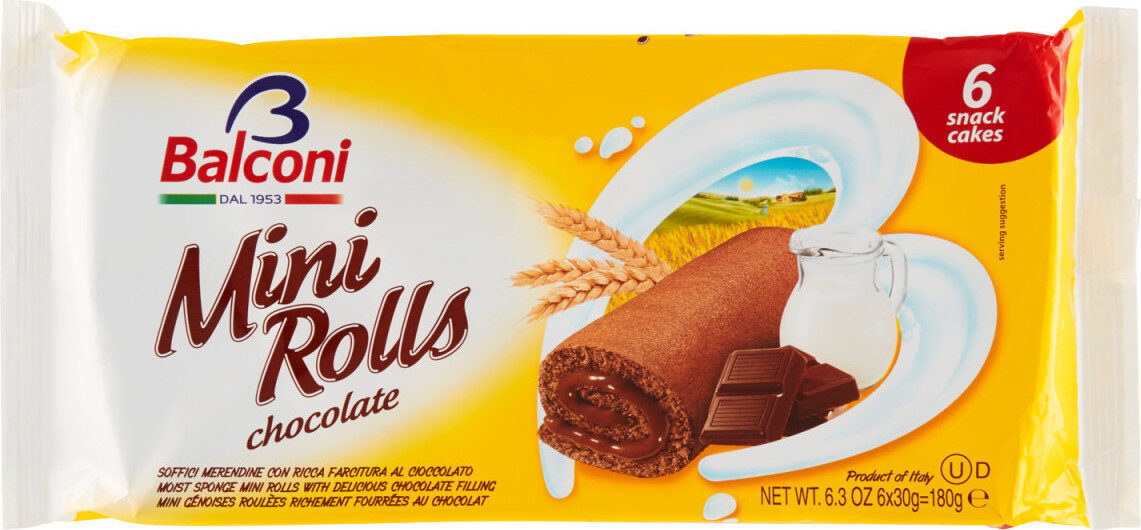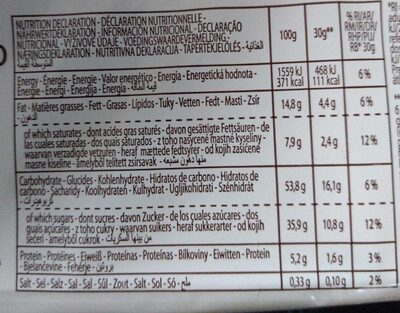Mini rolls chocolate - Balconi - 180 g
This product page is not complete. You can help to complete it by editing it and adding more data from the photos we have, or by taking more photos using the app for Android or iPhone/iPad. Thank you!
×
Barcode: 8001585008032 (EAN / EAN-13)
Common name: Produit de pâtisserie au four fourré au chocolat
Quantity: 180 g
Packaging: Plastique
Brands: Balconi
Categories: Snacks, Sweet snacks, Biscuits and cakes, Cakes, Biscuits et gâteaux, Gâteaux, Gâteaux au chocolat, Snacks sucrés
Labels, certifications, awards:
Halal
Manufacturing or processing places: Italie
Link to the product page on the official site of the producer: http://www.balconidolciaria.com/product/...
Stores: Magasins A
Countries where sold: Mexico
Matching with your preferences
Environment
Packaging
Transportation
Report a problem
Data sources
Product added on by hommedanslalune
Last edit of product page on by duhowpi.
Product page also edited by albee, foodvisor, halal-app-chakib, inf, jenaid, kiliweb, nouky20, off.03606f1a-0d69-4616-94c5-9f6cf7638e31, openfoodfacts-contributors, packbot, quechoisir, roboto-app, scanbot, yuka.sY2b0xO6T85zoF3NwEKvlnJlbvXmrxv1JRrSq2Kv5emzfrjNT-oru4TeKKg, yuka.sY2b0xO6T85zoF3NwEKvlnZDYtyB-2qaBTHlyBWy9_CMCZC3XY9R7aLCY6s.










